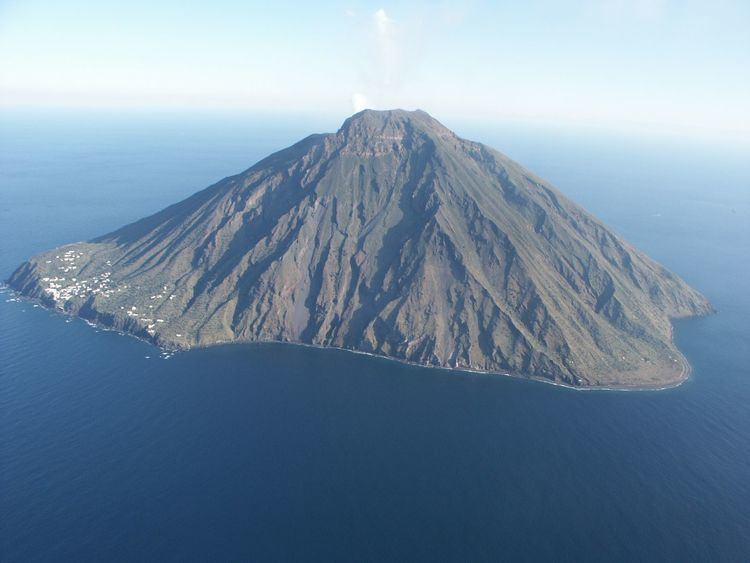Elevation 924 m (3,031 ft) Age of rock unknown Last eruption 1934 to present Area 12.6 km² | Prominence 924 m (3,031 ft) Easiest route Hike Island group Aeolian Islands | |
 | ||
Points of interest Museo del Cinema di Stromboli, Forgia Vecchia, Plage Forgia Vecchia, Stromboli, Ciminiera Similar Vulcano, Panarea, Salina - Sicily, Mount Etna, Alicudi | ||
Stromboli vulcano and etna a trip to the active volcanoes in italy
Stromboli ([ˈstromboli]; Sicilian: Struògnuli, Ancient Greek: Στρογγύλη, Strongulē) is a small island in the Tyrrhenian Sea, off the north coast of Sicily, containing one of the three active volcanoes in Italy. It is one of the eight Aeolian Islands, a volcanic arc north of Sicily. This name is derived from the Ancient Greek name Strongulē which was given to it because of its round swelling form. The island's population is about 500. The volcano has erupted many times and is constantly active with minor eruptions, often visible from many points on the island and from the surrounding sea, giving rise to the island's nickname "Lighthouse of the Mediterranean". The most recent major eruption was on 13 April 2009. Stromboli stands 926 m (3,034 ft) above sea level, and over 2,700 m (8,860 ft) on average above the sea floor. There are three active craters at the peak. A significant geological feature of the volcano is the Sciara del Fuoco ("Stream of fire"), a big horseshoe-shaped depression generated in the last 13,000 years by several collapses on the northwestern side of the cone. Two kilometers to the northeast lies Strombolicchio, the volcanic plug remnant of the original volcano.
Contents
- Stromboli vulcano and etna a trip to the active volcanoes in italy
- Map of Stromboli Italy
- The volcano
- Settlements
- Cinema music and literature
- References
Map of Stromboli, Italy
The volcano
Mt. Stromboli has been in almost continuous eruption for the past 2,000 years. A pattern of eruption is maintained in which explosions occur at the summit craters, with mild to moderate eruptions of incandescent volcanic bombs, at intervals ranging from minutes to hours. This Strombolian eruption, as it is known, is also observed at other volcanoes worldwide. Eruptions from the summit craters typically result in a few short, mild, but energetic bursts, ranging up to a few hundred meters in height, containing ash, incandescent lava fragments and stone blocks. Stromboli's activity is almost exclusively explosive, but lava flows do occur at times when volcanic activity is high: an effusive eruption occurred in 2002, the first in 17 years, and again in 2003, 2007, and 2013–14. Volcanic gas emissions from this volcano are measured by a Multi-Component Gas Analyzer System, which detects pre-eruptive degassing of rising magma, improving prediction of volcanic activity.
Settlements
The two villages San Bartolo and San Vincenzo lie in the northeast while the smaller village Ginostra lies in the southwest. Administratively, they are one of the frazione of Lipari.
In the early 1900s a few thousand people inhabited the island, but after several emigrations the population numbered a few hundred by the mid-1950s.
